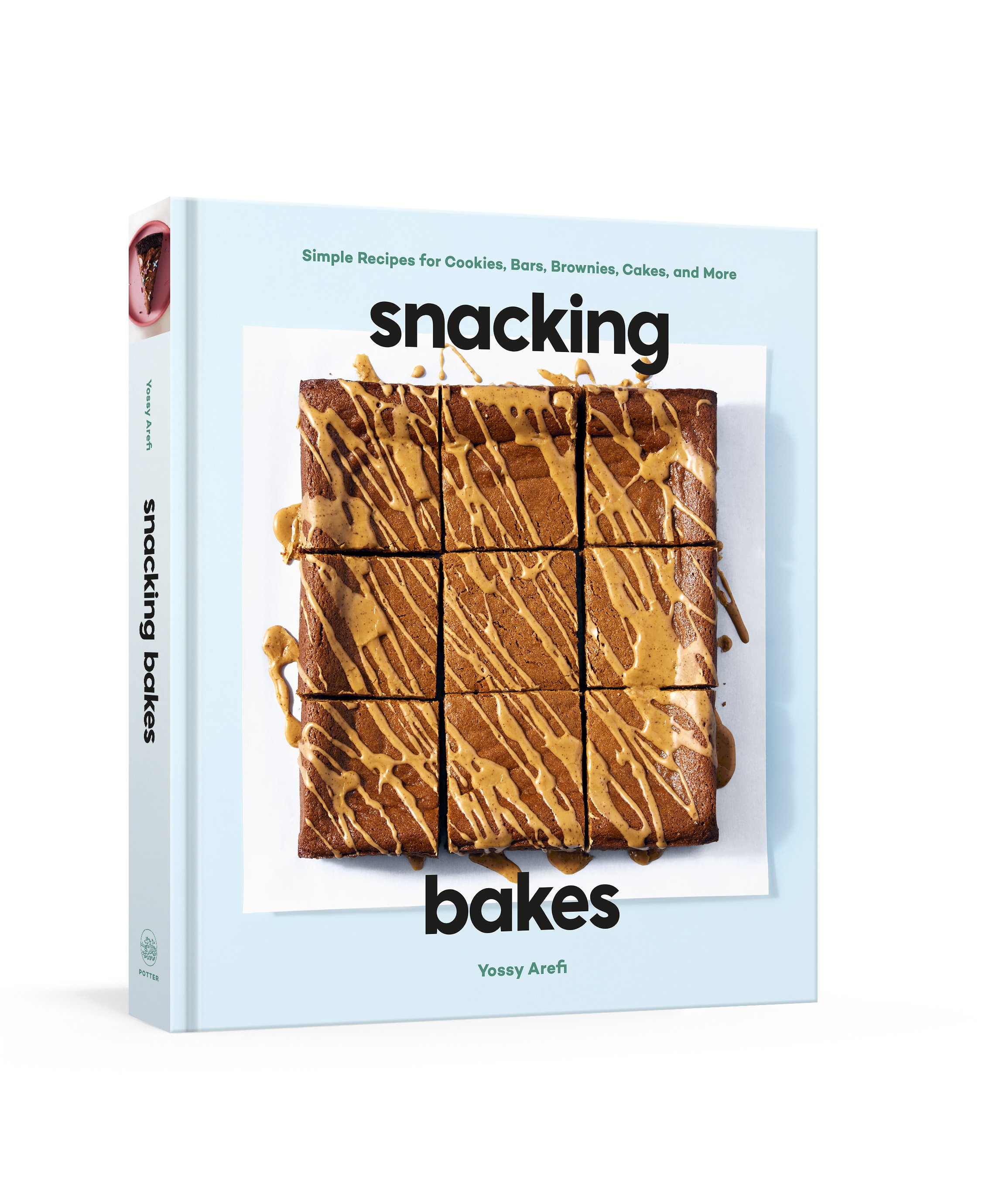Tartine's Croissants Revisited with Rye and Seeds
/If you've been following along here for awhile you might remember that I made Tartine's Croissants last year to great results. Well, I got the itch to make those croissants again, with a little twist. I love baking with rye flour so I substituted about 1/4 of the flour for rye, and to add a bit of crunch topped the croissants with a mixture of seeds and flaky salt. The end result was a bit more bready than the original version, but I blame that mostly on my impatience during the rising and resting times. When you make these at home make sure to take the time to let the dough rest, chill, and rise appropriately in between steps for the best results.
Have a great weekend!
Tartine Croissants with Rye and Seeds
adapted from Tartine
yield 16-18 croissants
Tartine lists ingredients in cups, grams and ounces. I used the gram measurements which I have included below along with the ounce measurements. There is quite a bit of resting/waiting/rising time in this recipe so make sure to read through the entire recipe at least once before you get started. Use European style butter for the best results here. Baking Illustrated also has some great croissant making tips HERE. Their method for rolling in the butter is a bit more traditional than this recipe, but the folding technique is the same.
For the Preferment
6 ounces/150ml nonfat milk (I used whole milk because that's what I had on hand)
15ml/1 tablespoon active dry yeast
6 1/4 ounces/175g unbleached all-purpose flour
For the Dough
20 ml/1 tablespoon plus 1 teaspoon active dry yeast
16 ounces/470ml whole milk (room temperature)
20 ounces/570g unbleached all-purpose flour
8 ounces/230g rye flour
2 1/2 ounces/70g sugar
20ml/1 tablespoon plus 1 teaspoon salt
15ml/1 tablespoon unsalted butter, melted
Roll-in Butter
22 ounces/625g unsalted butter, cool but pliable
Egg Wash
2 large eggs
2 ounces/60ml heavy cream or milk
pinch salt
Seeds
2 teaspoons flaky salt
1 teaspoon sesame seeds
1 teaspoon poppy seeds
1/2 teaspoon caraway seeds
To make the Preferment
1. Heat the milk in a small saucepan until it is just warmed through, about 80-90 degrees. Pour the milk into a medium bowl and stir in the yeast until dissolved. Add the flour and stir the mixture with a wooden spoon until a smooth, but sticky dough forms. Cover the bowl with cheesecloth or plastic wrap and let the mixture rise until it has almost doubled in volume. This will take 2-3 hours at room temperature or overnight in the refrigerator.
To make the Dough
1. Add the preferment mixture to the bowl of a stand mixer. Add the yeast and mix together on low speed with the dough hook until evenly combined. You may have to stop the mixer and scrape the dough off of the hook occasionally. When the mixture has come together, increase the speed to medium and mix for a couple of minutes.
2. With the mixer running, slowly add in half of the milk and mix until well combined. Reduce speed to low and add the remaining milk, flour, rye flour, sugar, salt and melted butter. Mix until the dough comes together, about 3 minutes. Turn off the mixer and let the dough rest for 15-20 minutes, loosely covered.
3. Turn the mixer back on low speed and mix the dough until it is smooth and elastic, no more than 4 minutes. If the dough seems very firm, add in more milk, 1 tablespoon at a time. If the dough seems very soft, add in more all purpose flour, 1 tablespoon at a time.
Make sure to not overmix the dough as over-mixed dough will result in tough, glutenous croissants that are difficult to roll out. Cover the bowl with cheesecloth or plastic wrap and let it rise until the volume increases by half, about 1 1/2 hours.
4. Lightly flour a work surface and transfer the dough to the surface. Gently press the dough into a rectangle 2'' thick. Wrap the rectangle in plastic wrap and place it in the refrigerator to chill for 4-6 hours.
To "Laminate" the Dough with Butter
1. About 1 hour before you are ready to start rolling and laminating the dough, take the roll-in butter and place it in the bowl of a stand mixer fitted with the paddle attachment. Mix the butter on medium low speed until it is malleable but not warm or soft. Turn the soft butter onto a piece of plastic wrap and wrap it up. Place it in the refrigerator to stay cool, but don't let it harden completely.
2. Lightly dust a work surface with flour and place the rectangle of chilled dough on it. Roll the dough into a rectangle 28 inches by 12 inches.
3. With the long side of the rectangle facing you, and starting from the left side, use your fingers to gently and evenly spread the butter over 2/3 of the rectangle, leaving the far right side butter-less. Fold the un-buttered third of the dough over the butter, then fold the left-hand third over the center, like a letter. Gently pinch all of the seams of the dough to hold the butter in place.
4. Give the rectangle a quarter turn so that the end seams are to your right and left and the long edge of the dough is facing you. Again, roll the dough into a 28 inch by 12 inch rectangle, being careful to not break the seams holding the butter in. Fold the rectangle into thirds and transfer to a lightly floured quarter sheet pan. Wrap tightly in plastic wrap and let the dough rest in the refrigerator for 1 1/2-2 hours before making the final turn.
5. Lightly flour a work surface and place the refrigerated dough on top. Again, roll the dough to a 28 inch by 12 inch rectangle and fold it into thirds. Place the rectangle back on the quarter sheet pan and wrap tightly with plastic. Place the pan in the freezer for at least one hour. If you plan to make the croissants the next morning, transfer the dough from the freezer to the fridge the night before. Alternately, you can freeze the dough for up to one week, just remember to transfer the dough to the fridge the night before you plan to bake the croissants.
I froze my dough for 5 days before baking.
To Finish the Croissants
1. Transfer the thawed dough to a lightly floured work surface and roll it into a rectangle 32 inches by 12 inches and about 3/8 inch tall.
2. Use a ruler to mark 4 inch intervals at the bottom of the dough. Cut the dough into long triangles, 4 inches wide at their base. If you'd like to make pain au chocolat, cut the dough into 6 inch by 4 inch rectangles.
3. To shape the croissants, begin with the base of the triangle facing you, gently stretch the base and roll the base towards the point. To finish, grab the point, stretch it gently, and tuck it underneath the rolled dough. This will help the croissants stand tall and proud. To shape the pain au chocolat, place a baton of chocolate or a few ounces of chopped chocolate in the center of the rectangle and, starting from a short end, carefully roll the croissant. Place the croissants or pain au chocolat, seam side down on a lined baking sheet at least 2 inches apart.
I used two baking sheets.
4. Loosely cover the formed pastries and let them rise until at least doubled in size, 2-3 hours, in a draft free area. The ideal ambient temperature is 75º, but a bit warmer or cooler is alright as long as the temperature is not so warm that it melts the butter in between the layers. When the croissants are finished rising the pastries should be puffy, but still a bit firm to the touch.
5. When the croissants are ready to be baked, preheat your oven to 425º and prepare the egg wash by whisking all of the ingredients together. Stir the salt and seeds together in a small bowl. About 10 minutes before you are ready to put the croissants in the oven, gently brush them with the egg wash and sprinkle with the seed mixture if desired. Let the wash dry slightly before baking. Make sure to wipe up any errant drips of egg wash on the baking sheet.
6. Place the croissants in the oven and turn down the temperature to 400º. After 10 minutes, quickly open the oven door and turn the sheet pan(s) 180º which will help the croissants bake evenly. Bake for 6-10 more minutes or until the croissants are deep golden brown.
7. Remove the croissants from the oven and place on a wire rack to cool. They are best enjoyed fresh and warm, but they can be stored in an airtight container at room temperature for 1 day or for up to 3 days in the fridge. Genltly warm them in a 375º oven before serving.
Bonus Recipe
If you have any scraps of dough left over after cutting your triangles and rectangles DO NOT throw them away. Roll them in a mixture of 4 tablespoons sugar and 1 teaspoon of cinnamon. Then curl them up into little snails and tuck them into a muffin tin. Let them rise until they are doubled in size and bake in a 400º oven until crisp and deep golden brown.





















